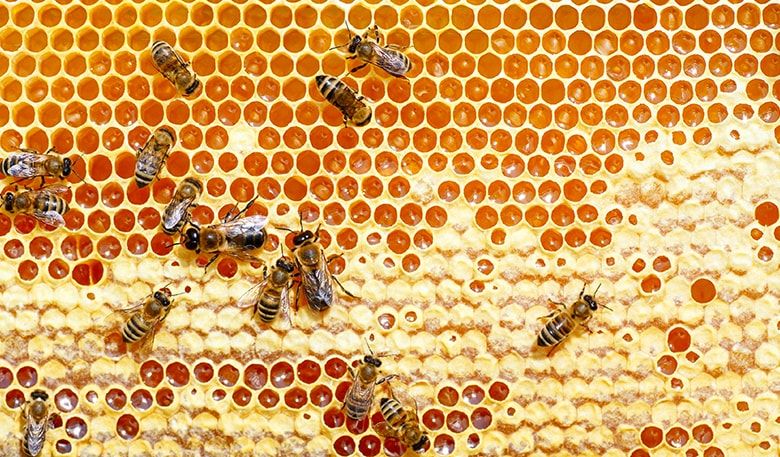Honeycomb : Cluster Of Perfect Hexagons
Apr 18, 2019 • 49 views
Honeybees are indeed some good architects in nature.
I was walking around in the corridor of my hostel where one of the corners were occupied by honeybee and their big home known as honeycomb. I observed the honeycomb was a small brown patch a few days ago but now its a massive structure with many hexagonal shaped pores inhabited by hundreds of bees. My wondering switched into the curiosity which led me here. It’s simply beautiful how earth’s creatures, specifically bees, can make the most wonderful structures.
Honeycomb is a cluster of repeating hexagonal beeswax cells that fill the interior of ahoney bee beehive.It is the internal structure of the honeybee hive that forms the "rooms" that are the home of the honeybee. A single hexagonal structure is known as a cell. Individual cells serve the colony in different ways. Upon returning from her mating flight, the queen bee lays her eggs in the cells that have been constructed by her female worker bees by chewing the pieces of wax and adding them to honeycomb construction. These cells are known as brood cells and will serve as incubation chambers for developing honeybees. The brood cells are meticulously maintained by the female worker bees, filled with honey and pollen. This brood is the future of the colony!
Why the hexagonal shape?

The hexagon is the base shape for a matrix that minimized the used of construction material while at the same time maximizing the strength and reducing the weight of the final product. Honeybees are not unique in their selection of the hexagon as a structural building shape. The hexagon has been utilized throughout evolution due to its simplicity, strength, and durability.
Recent studies show that the holes in the honeycomb don’t actually start out as hexagons! In fact, the bees make each hole as a circular tube in a precise staggered organization. The heat formed by the activity of the bees softens the wax, which creeps along with the network between the holes. The wax hardens in the most energetically favorable configuration, which happens to be the rounded hexagonal pattern.
The nutritional value in honeycomb-
Honeycomb is basically beeswax andraw honey. The beeswax is the substance from which honeycomb is made. Honeybees must consume honey in order to produce beeswax. It has very little nutritional valuewith the exception of trace amounts of vitamin A. However since our system does not break down beeswax, it is a very good source of roughage.

Beewax
Raw honey on the other side is very nutritious; packed full of vitamins, enzymes, pollen, and antioxidants. Interestingly, the most nutritious of all is the honey still sealed in the wax cells of the honeycomb, it is the honey in its purest formwhich contains very little water. But honey, when exposed to air, has a tendency to pull water from the atmosphere. So, honey that is removed from the comb and exposed to air holds around 12% more water than honey left sealed in the comb. This dilution creates a slight but measurable difference in nutritional value by weight.
Propolis is one of the many remarkable but lesser-known products manufactured by honeybees. In addition to nectar and pollen, honeybees also collect plant resins. While nectar and pollen are stored for later consumption, honeybees mix plant resins with enzymes and beeswax to create a multipurpose substance, propolis that has a direct beneficial effect on a hive's health. Today, people look to propolis for immune system support and to help boost resistance to and recovery from the common cold.

Propolis
